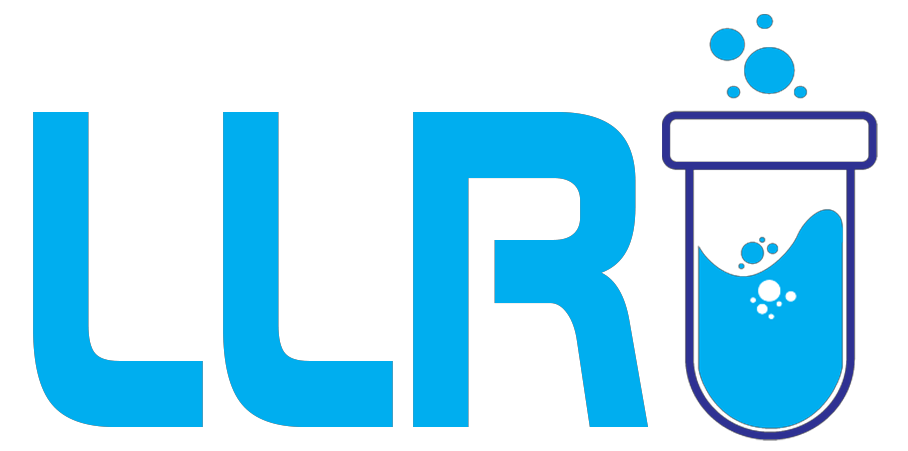Drug Designing in Bioinformatics: Drug discovery has always been a time-consuming and expensive process. However, with the advancement of bioinformatics, drug designing has taken a new turn. Today, researchers use computational techniques to design drugs faster and more efficiently.
But how does this process work? What are the different methods used? Let’s dive deep into drug designing in bioinformatics and explore its significance.
What is Drug Designing in Bioinformatics?
Drug designing in bioinformatics refers to the use of computational methods and bioinformatics tools to design and develop new drugs. It integrates various disciplines such as biology, chemistry, and computer science to predict how potential drug molecules will interact with target proteins. This method speeds up drug discovery and reduces costs significantly.
As per a report published by the National Center for Biotechnology Information (NCBI), computational drug design methods have reduced the time for initial drug screening by nearly 50%, making the process more efficient and reliable.

Types of Drug Design
Drug design can be broadly classified into two types:
- Structure-Based Drug Design (SBDD)
- Uses the 3D structure of the target protein.
- Helps in designing drugs that fit perfectly into the active site of the protein.
- Ligand-Based Drug Design (LBDD)
- Relies on known active molecules to develop new drugs.
- Works on the principle that similar molecules exhibit similar biological activity.
Here is a well-explained introduction into the types of drug design….
1. Structure-Based Drug Design (SBDD)
Structure-Based Drug Design (SBDD) is a method of drug discovery that uses the three-dimensional (3D) structure of a target protein to design effective drug molecules. The main goal of SBDD is to create compounds that bind precisely to the active site of a protein, leading to a therapeutic effect.
How SBDD Works
The process of structure-based drug design typically involves the following steps:
- Target Identification and Structural Determination
- Scientists identify a protein that plays a crucial role in a disease (e.g., an enzyme or receptor).
- The 3D structure of this target protein is determined using techniques like X-ray crystallography, Nuclear Magnetic Resonance (NMR) spectroscopy, or Cryo-Electron Microscopy (Cryo-EM).
- Binding Site Analysis
- The protein’s active site is analyzed to understand its shape, charge, and hydrophobic/hydrophilic regions.
- This helps researchers design molecules that will fit perfectly into the active site.
- Molecular Docking
- Molecular docking is a computational technique used to predict how a drug molecule will bind to the target protein.
- Software like AutoDock, SwissDock, and Schrödinger Suite helps simulate these interactions.
- Optimization of Lead Compounds
- Once a promising molecule is identified, it undergoes modifications to improve its binding affinity, stability, and bioavailability.
- In Vitro and In Vivo Testing
- The designed drug candidates are tested in laboratory experiments (in vitro) and animal models (in vivo) to confirm their effectiveness before clinical trials.
Advantages of SBDD
- Highly Specific: Since the drug is designed based on the protein structure, it has high specificity, reducing unwanted side effects.
- Time-Saving: SBDD eliminates the need for random screening of compounds, making the process faster.
- Cost-Effective: Reduces the cost of drug development by minimizing failed experiments.
Examples of SBDD in Drug Discovery
- HIV Protease Inhibitors – Drugs like Ritonavir and Saquinavir were designed using SBDD to target the HIV protease enzyme.
- Anti-Cancer Drugs – Drugs like Imatinib (Gleevec) target the BCR-ABL protein in leukemia.
Learn in detail about the types of drug design here…

2. Ligand-Based Drug Design (LBDD)
Ligand-Based Drug Design (LBDD) is another major approach to drug discovery. Unlike SBDD, which relies on the structure of the target protein, LBDD focuses on known active molecules (ligands) that interact with the target. The principle behind LBDD is that molecules with similar chemical structures tend to exhibit similar biological activity.
How LBDD Works
The ligand-based drug design approach involves the following steps:
- Data Collection of Active Ligands
- Researchers collect data on molecules that have shown activity against a target protein.
- These molecules are often extracted from natural sources or existing drugs.
- Quantitative Structure-Activity Relationship (QSAR) Analysis
- QSAR models use mathematical and statistical techniques to predict the relationship between a ligand’s structure and its biological activity.
- This helps in designing new molecules with enhanced potency.
- Pharmacophore Modelling
- Pharmacophore models define essential features (e.g., hydrogen bond donors/acceptors, hydrophobic regions) that a drug molecule should have to interact with the target.
- This method helps in screening chemical libraries for similar compounds.
- Virtual Screening and Lead Optimization
- Virtual screening involves using bioinformatics tools like PyRx and OpenBabel to identify potential drug candidates from large databases.
- The selected compounds are optimized for better performance.
- Experimental Validation
- The best molecules are synthesized and tested in biological assays to confirm their activity.
Advantages of LBDD
- Works without protein structure data: Unlike SBDD, LBDD does not require a 3D protein structure, making it useful when structural information is unavailable.
- Efficient in optimizing drug properties: By analyzing existing active molecules, scientists can improve drug potency, selectivity, and bioavailability.
- Applicable to a wide range of drug targets: Can be used for diseases where protein structures are unknown or hard to determine.
Examples of LBDD in Drug Discovery
- Beta-Blockers (Propranolol) – Developed using QSAR models to improve heart disease treatments.
- Non-Steroidal Anti-Inflammatory Drugs (NSAIDs) – Designed based on ligand activity against pain receptors.
Comparison: SBDD vs. LBDD
Here is a comparison list for the types of drug design for your understanding.
| Feature | Structure-Based Drug Design (SBDD) | Ligand-Based Drug Design (LBDD) |
| Approach | Uses 3D structure of target protein | Uses known active molecules |
| Data Requirement | Requires structural data (X-ray, NMR, Cryo-EM) | Requires bioactivity data of ligands |
| Tools Used | Molecular docking, molecular dynamics, pharmacophore modelling | QSAR, virtual screening, pharmacophore modelling |
| Use Cases | Works well when protein structure is available | Works when structural data is unavailable |
| Advantages | High specificity, cost-effective, time-saving | Fast screening, applicable to many diseases |
Other emerging methods include de novo design drug discovery and fragment-based drug design, which allow for more precise drug formulation.
Structure-Based Drug Design Methods
Structure-based drug design (SBDD) plays a crucial role in modern drug discovery. Some of the common structure-based drug design methods include:
- Molecular Docking: Predicts how a drug molecule will bind to a target.
- Molecular Dynamics Simulations: Studies the behavior of molecules over time.
- Pharmacophore Modelling: Identifies essential features of drug molecules.
These methods help in designing drugs with high specificity and fewer side effects.
Role of Computational Drug Design
Computational drug design has transformed the pharmaceutical industry by making drug discovery faster and more cost-effective. Here’s how it helps:
- Predicts potential drug candidates before lab testing.
- Reduces the need for extensive animal testing.
- Enhances drug efficacy by optimizing molecular interactions.
According to the FDA, over 60% of newly approved drugs in recent years have been developed using computational approaches.
Application of Bioinformatics in Drug Discovery and Drug Designing
The application of bioinformatics in drug discovery and drug designing is vast and includes:
- Target Identification and Validation: Finding the right protein or gene to target.
- Lead Compound Identification: Screening thousands of compounds to find potential drugs.
- Optimizing Drug Properties: Enhancing absorption, stability, and effectiveness.
- Toxicity Prediction: Reducing side effects before clinical trials.
The use of bioinformatics tools for drug designing has significantly improved the precision of drug development.
Bioinformatics Tools for Drug Designing
Some of the widely used bioinformatics tools for drug designing include:
🔹 AutoDock: Used for molecular docking studies.
🔹 PyRx: A virtual screening tool.
🔹 SwissDock: Predicts drug binding sites.
🔹 Schrödinger Suite: Advanced molecular modeling software.
These tools play a key role in modern computational drug design strategies.

De Novo Design Drug Discovery and Fragment-Based Drug Design
De novo design drug discovery is an innovative approach where drug molecules are built from scratch using computational methods. This eliminates the need for traditional trial-and-error screening.
Similarly, fragment-based drug design focuses on smaller molecular fragments that bind to a target site and then combines them to create an effective drug. This approach is used in developing drugs for cancer and neurodegenerative diseases.
Career Opportunities in Drug Designing and Clinical Research
With the rise of drug design and discovery, there is an increasing demand for professionals in this field. If you are interested in making a career in bioinformatics and drug discovery, enrolling in specialized courses can be a great step forward.
Clinical Research Courses and Training
Institutions like Learning Labb Research Institute (LLRI) offer specialized courses in bioinformatics and clinical research to equip students with industry-relevant skills. Some popular courses include:
- Clinical Research Training – Covers drug development processes and regulatory guidelines.
- Clinical Research Course Fees – Affordable fee structures available at LLRI.
- PG Diploma in Clinical Research – Advanced training for in-depth knowledge.
If you are looking for the best institute for PG diploma in clinical research, LLRI is a great choice, offering hands-on training and job placement assistance.
On A Final Note…
Drug designing in bioinformatics is shaping the future of medicine. From structure-based drug design methods to computational drug design, this field is revolutionizing drug discovery. With the right bioinformatics tools for drug designing, researchers can develop safer and more effective drugs.
Whether you’re a student, researcher, or industry professional, learning about drug designing in bioinformatics can open new doors. If you are interested in building a career in this field, consider enrolling in a clinical research training center like LLRI.

